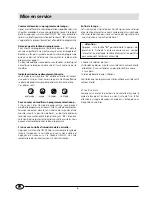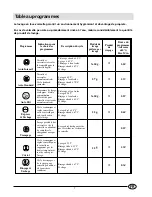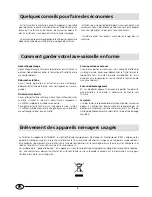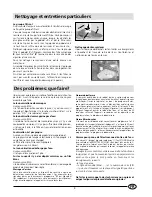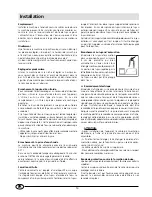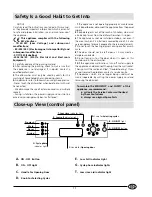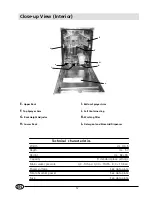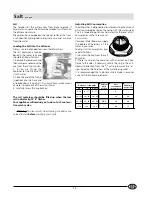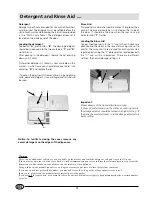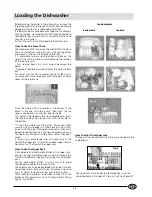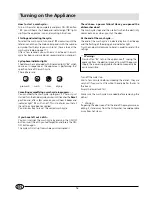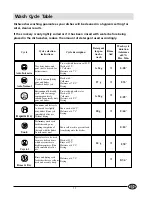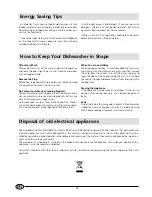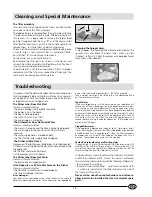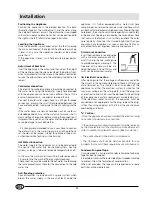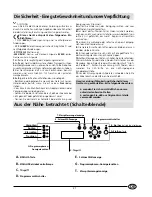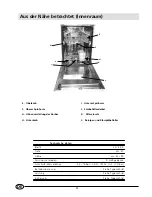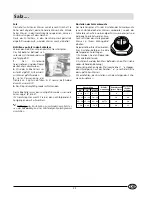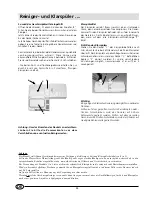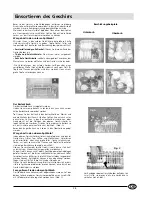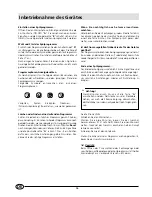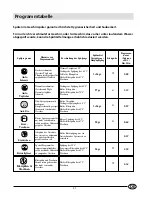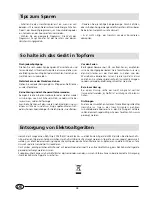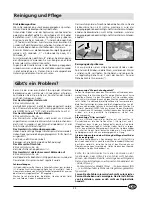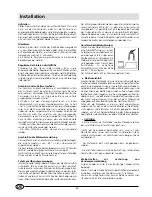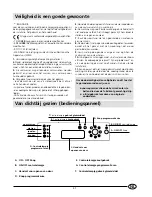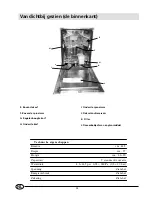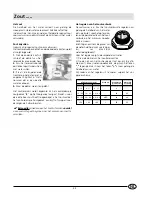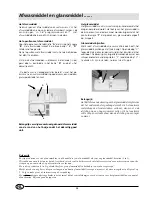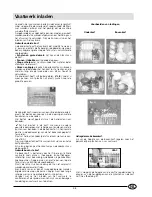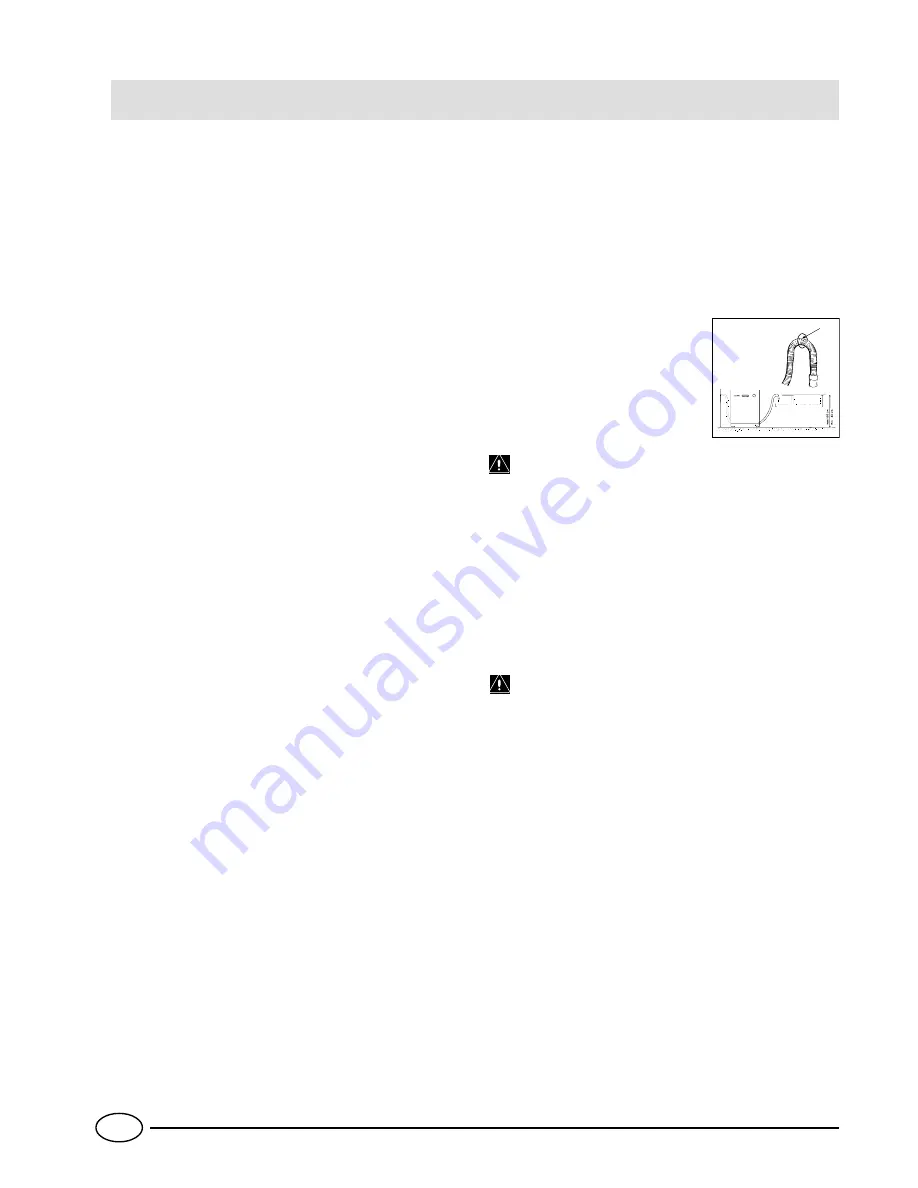
20
EN
Installation
Positioning the Appliance
Position the appliance in the desired location. The back
should rest against the wall behind it, and the sides, along
the adjacent cabinets or wall. The dishwasher is equipped
with water supply and drain hoses that can be positioned to
the right or the left to facilitate proper installation.
Levelling the Appliance
Once the appliance is positioned, adjust the feet (screwing
them in or out) to adjust the height of the dishwasher, making
it level. In any case, the appliance should not be inclined
more than 2°.
If the appliance is level, it will help ensure proper perfor-
mance.
Adjustment of Back Feet
Insert the appliance in the cutout and then adjust the height
of the machine using the screws located at the bottom front.
Use a screwdriver to turn the screws in the clockwise direction
to raise the dishwasher and in the anticlockwise direction to
lower it.
Cold water connection.
This electric household appliance should be connected to
the water mains using the cold water supply hose provided
with the appliance only. Do not use a different hose. In the
event of replacements, use original spare parts only.
Connect the cold water supply hose to a 3/4 gas threaded
connection, placing the small filter provided between the
hose and connection, taking care to screw it tightly onto the
tap.
If the water hoses are new or have been out of use for an
extended period of time, let the water run to make sure it is
clear and free of impurities before making the connection. If
this precaution is not taken, the water inlet could get blocked,
causing damage to your dishwasher.
- It is strongly recommended to use a new hose to connect
the dishwasher to the water supply line, and the old hose-
set should not be reused. Asking to specilized shop or an
authorized service technician (see Service).
Hot Water Connection
The water supply to the appliance can also be connected to
the house's hot water line (centralised system, heating
system), as long as it does not exceed a temperature of 60°
C.
In this case, the wash cycle time will be shortened by about
15 minutes and the wash efficiency slightly reduced.
The connection must be made to the hot water line following
the same procedures as those for the connection to the cold
water line.
Anti-flooding protection
Your dishwasher is provided with a special system which
blocks the water supply in the event of leaks inside the
appliance. It is further equipped with a water inlet hose
comprising an outer clear hose and an inner red hose, which
can both withstand extremely high pressures. Should the inner
hose break, the outer hose will consequently turn red. Safety
in the event of flooding is ensured by the second clear hose
that contains the former. It is vital that you check the outer
hose regularly: if you see it has turned bright red, then you
know you have to replace it as soon as possible. Call for an
authorised technical engineer to come and replace it.
Drain Hose Connection
Insert the drain hose into a drain pipe
with a minimum diameter of 4 cm.,
or let it run into the sink, making sure
to avoid bending or crimping it. The
free end of the hose must be at a
height between 40 and 100 cm.and
must not be immersed in water.
Electrical Connection
After making sure that the voltage and frequency values for
the current in the home correspond to those on the rating
plate (located on the stainless steel inner door of the
appliance) and that the electrical system is sized for the
maximum voltage on the rating plate, insert the plug into
an electrical socket which is earthed properly (the earthing
of the appliance is a safety requirement mandated by law).
If the electrical socket to which the appliance must be
connected is not appropriate for the plug, replace the plug,
rather than using adpators or the like as they could cause
overheating and burns.
Caution:
- Once the appliance has been installed, the electrical plug
and socket should remain accessible.
- If the power supply cable is damaged, it must be replaced
by the manufacturer or its Technical Assistance Service in
order to prevent all potential hazards. (See Assistance)
- The cable should not be bent or compressed.
- The Company shall not be held responsible for any
incidents that occur if these regulations are not observed.
.
Condensation-proof tape.
On some models, a transparent condensation-proof adhesive
tape has been provided.
It should be stuck onto the lower side of your wooden worktop
to protect it from the formation of condensation.
When not provided, this tape can be requested as a spare
part from authorised retailers.
A

